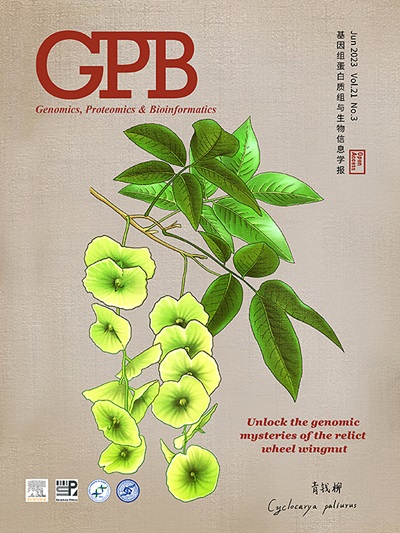艾滋病毒潜伏期逆转的单细胞多组学综合分析揭示了病毒再激活的新型调控因子
IF 7.9
2区 生物学
Q1 GENETICS & HEREDITY
引用次数: 0
摘要
摘要 尽管抗逆转录病毒疗法取得了成功,但人类免疫缺陷病毒(HIV)仍无法治愈,因为潜伏感染的细胞库逃避了治疗。为了了解艾滋病毒潜伏的机制,我们采用了单细胞 RNA 测序(RNA-seq)和单细胞转座酶可访问染色质测序(ATAC-seq)的综合方法,同时分析了使用三种不同的潜伏逆转剂重新激活后 125,000 个潜伏感染的初级 CD4 细胞的转录组和表观组特征。我们利用差异表达基因和差异可及基序来研究整个细胞群的转录途径和转录因子(TF)活性。我们确定了其表达/活性与病毒再活化相关的细胞转录本和转录因子,并证明根据这些数据训练的机器学习模型在预测病毒再活化方面的准确率为 75%-79%。最后,我们验证了两个候选 HIV 调节因子 FOXP1 和 GATA3 在病毒转录中的作用。这些数据证明了综合多模态单细胞分析在揭示宿主细胞因子与 HIV 潜伏期之间的新型关系方面的强大功能。本文章由计算机程序翻译,如有差异,请以英文原文为准。
Integrated Single-cell Multiomic Analysis of HIV Latency Reversal Reveals Novel Regulators of Viral Reactivation
求助全文
通过发布文献求助,成功后即可免费获取论文全文。
去求助
来源期刊

Genomics, Proteomics & Bioinformatics
Biochemistry, Genetics and Molecular Biology-Biochemistry
CiteScore
14.30
自引率
4.20%
发文量
844
审稿时长
61 days
期刊介绍:
Genomics, Proteomics and Bioinformatics (GPB) is the official journal of the Beijing Institute of Genomics, Chinese Academy of Sciences / China National Center for Bioinformation and Genetics Society of China. It aims to disseminate new developments in the field of omics and bioinformatics, publish high-quality discoveries quickly, and promote open access and online publication. GPB welcomes submissions in all areas of life science, biology, and biomedicine, with a focus on large data acquisition, analysis, and curation. Manuscripts covering omics and related bioinformatics topics are particularly encouraged. GPB is indexed/abstracted by PubMed/MEDLINE, PubMed Central, Scopus, BIOSIS Previews, Chemical Abstracts, CSCD, among others.
 求助内容:
求助内容: 应助结果提醒方式:
应助结果提醒方式:


